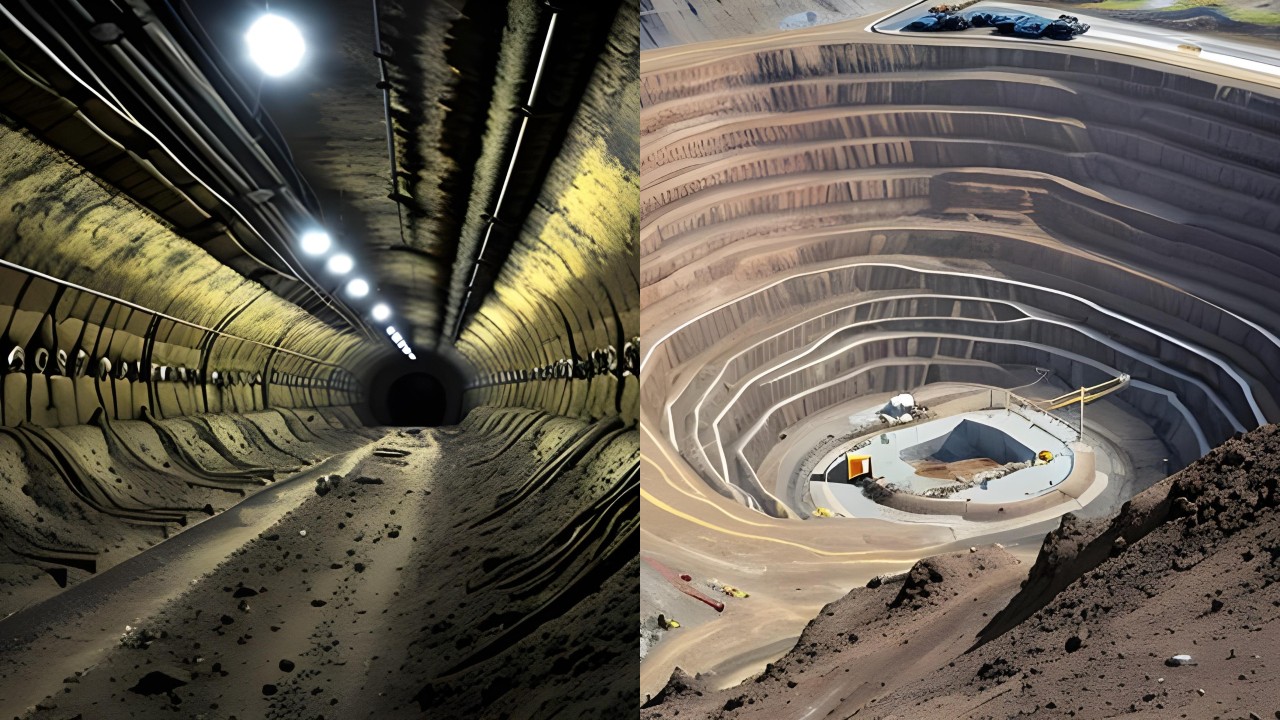
Unveiling the Depths and Surfaces: Underground Mining vs. Open Pit Mining
Introduction: Mining, a vital industry driving global economies, employs various methods for resource extraction. This article explores the stark differences between underground mining and open pit mining, two distinct techniques that unearth Earth's valuable treasures.
Underground Mining: Delving into the Depths

Definition: Underground mining involves extracting minerals and resources from beneath the Earth's surface through a network of tunnels and shafts. This method is employed when deposits are situated deep below ground, making surface excavation impractical.
Operational Mechanism:
Access Tunnels and Shafts: Miners create tunnels and shafts to reach the deposit's depth.
Drilling and Blasting: Rock is fragmented using drilling and blasting techniques.
Transport and Processing: Minerals are transported to the surface for processing via conveyors or other transportation methods.
Advantages:
Environmental Impact: Underground mining has a smaller environmental footprint compared to open pit mining, causing less surface disturbance.
Safety: Miners are generally shielded from external elements, reducing exposure to natural hazards.
Resource Recovery: High-grade ore can be extracted efficiently, maximizing resource recovery.
Challenges:
Cost: Underground mining is often more expensive due to the need for extensive tunneling and ventilation systems.
Limited Accessibility: Certain deposits may be challenging to access or may have limited ore bodies suitable for this method.
Risk of Subsidence: Excavation can lead to ground subsidence, potentially impacting surface structures.
Open Pit Mining: Exposing Earth's Riches

Definition: Open pit mining, a surface mining technique, involves creating large excavations or pits to access valuable minerals. This method is suitable for shallow deposits near the Earth's surface.
Operational Mechanism:
Geological Exploration: Preliminary surveys determine the location and quality of deposits.
Blasting: Explosives break down rocks, making extraction more manageable.
Excavation and Transport: Large equipment excavates minerals, which are then transported for further processing.
Advantages:
Cost-Effectiveness: Open pit mining is often more economically viable due to simpler extraction processes.
High Production Yield: This method yields large quantities of minerals in a relatively short timeframe.
Technological Advancements: Advanced technologies, such as automation, enhance operational efficiency and safety.
Challenges:
Environmental Impact: Open pit mining can lead to water and soil pollution, landscape alteration, and disruption to local ecosystems.
Social Consequences: Mining activities may cause changes in local communities, including population displacement and social unrest.
Visual Impact: Large-scale excavation alters the landscape, impacting the aesthetics of the surrounding area.
Conclusion:
Both underground and open pit mining play crucial roles in meeting global resource demands. The choice between these methods depends on factors such as deposit depth, environmental considerations, and economic feasibility. Striking a balance between resource extraction and environmental preservation remains paramount as the mining industry continues to evolve.
I am thrilled to be interconnected and globalized by introducing and exporting the manufactured products to the world, and adding value to the international business landscape..
5moWow nice, thank for sharing knowledge!